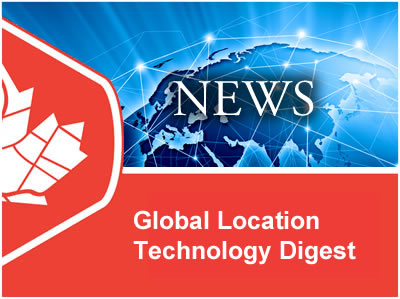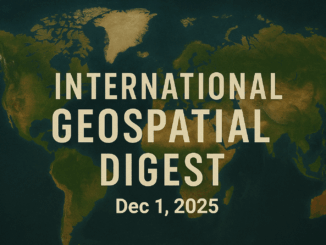
In Xichang on July 26th2019, a group of new remote sensing satellites were sent into orbit.

The satellites have entered the planned orbit. They will be used for electromagnetic environment detective and related technological testing.
China launches new remote sensing satellites
Arming IoT with geospatial analytics
Internet of Things (IoT) devices and sensors have been used to monitor and track equipment, products, humans, the list goes on.
One of the early applications of IoT was the positioning of sensors to allow for the exact tracking of objects by providing absolute or relative displacement information. That being said, FutureIoT spoke with the CEO of Geospock, Richard Baker, to discuss his view on geospatial data and the tech that can be used to improve IoT data.
Also Read: Geospatial World
Arming IoT with geospatial analytics for better insight
Ordnance Survey hits legal dispute

This hearing is the peak of this four-year dispute over whether the Surrey based start-up 77M may use the geographical data derived from OS products.
The UKAuthority has reviewed the court papers claiming that the proceedings show the “abject failure” of the policy thanks to “stubborn intransigence” on the part of the mapping agency.
The hearing continues, and many are eagerly anticipating the verdict. ‘Whichever way the verdict goes, it is an embarrassment for the Geospatial Commission, set up in 2017 with members including HM Land Registry and Ordnance Survey to co-ordinate the opening up of key national data sets for re-use.’
Ordnance Survey hits legal dispute with geospatial start-up
Location Analytics & Business Intelligence advisory board announced
Geospatial Media and Communications is a knowledge based geospatial company dedicated to promoting and facilitating the growth of the geospatial industry.
The Location Analytics and Business Intelligence (LA & BI) advisory board consists of executives whom bring a track record of success and expertise in the field.
The board members consist of:
- Asif Khan, Founder and President, Location Based Marketing Association (LBMA)
- Ed Parsons, Geospatial Technologist, Google
- Javier de la Torre, Chief Strategy Officer, CARTO
- Mike Davie, CEO, Quadrant
- Pankaj Khushani, Sr. Director – Partnerships & Alliances, Elastic
- Thomas Walle, CEO & Co-founder, Unacast
- Tina Thomson, Head of Catastrophe Analytics EMEA, Willis Towers Watson
Geospatial Media announces Location Analytics & Business Intelligence advisory board
Classifying Urban Poor Areas with Satellite Imagery

Hannes Taubenböck and his team at the German Aerospace Center are using Very High-Resolution satellite imagery to develop a base model classification system for the shape and structure of urban poor areas around the world.
‘There were significant morphological differences between slums within the same countries and even within the same city. This further proved the need for a consistent method for empirically classifying the types of urban slums… While the results of this study may have concluded that no two Arrival Cities are physically identical, the people living inside of them share many experiences. They struggle to find adequate income, healthcare and access to utilities such as clean drinking water and electricity. By closing the data gaps regarding these poor urban areas, we give geospatial professionals the tools they need to paint a complete picture for policy makers.’




Be the first to comment